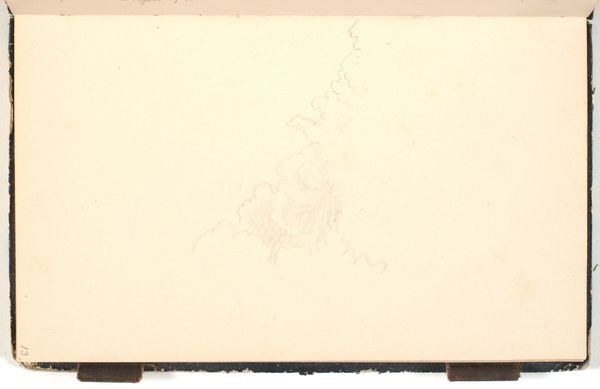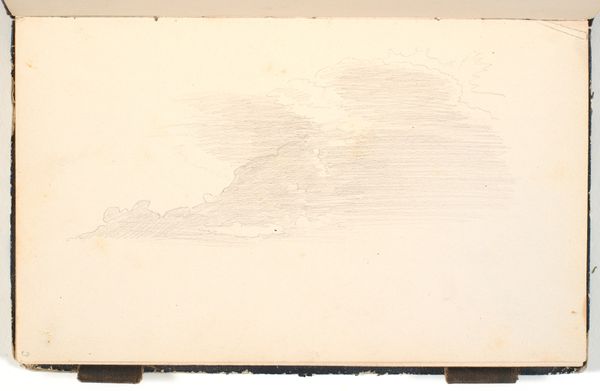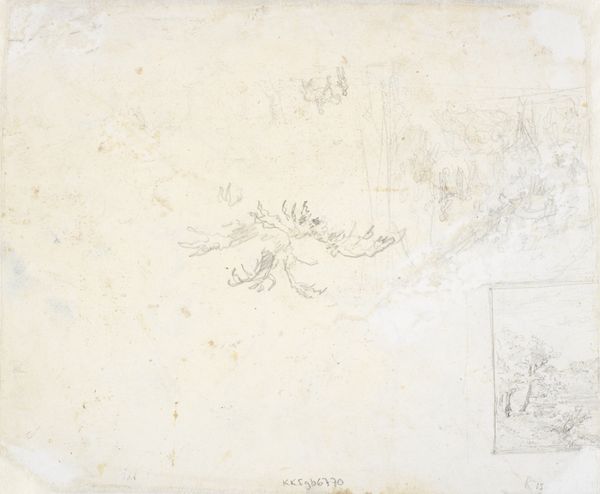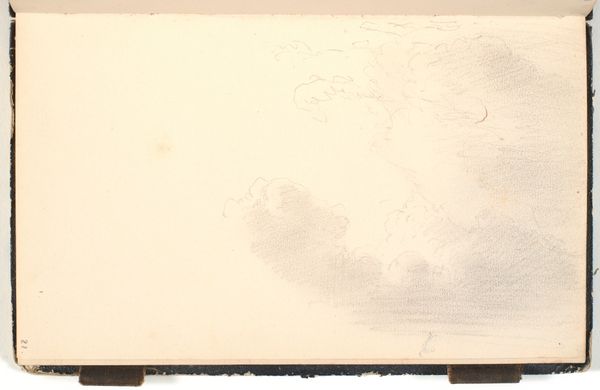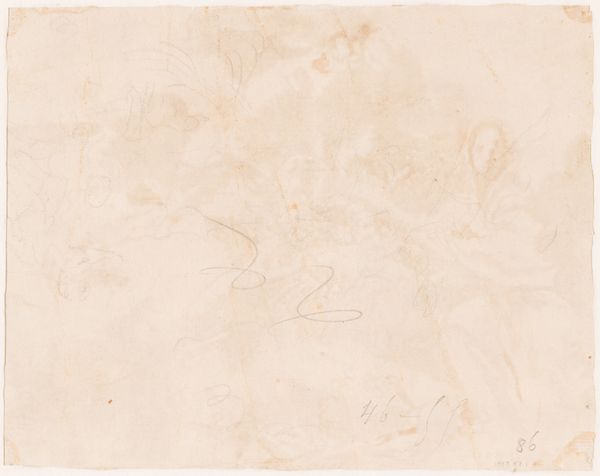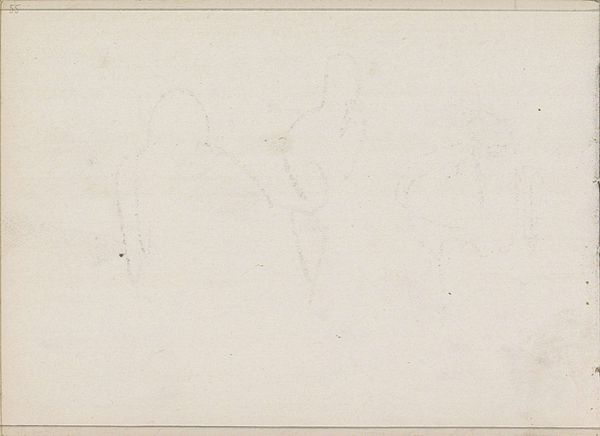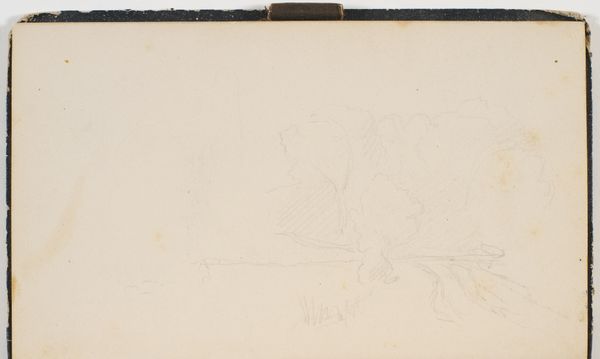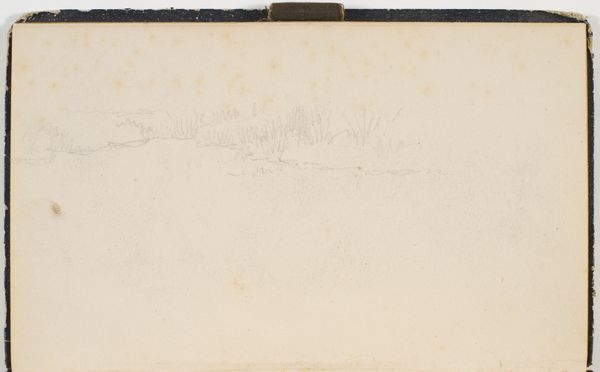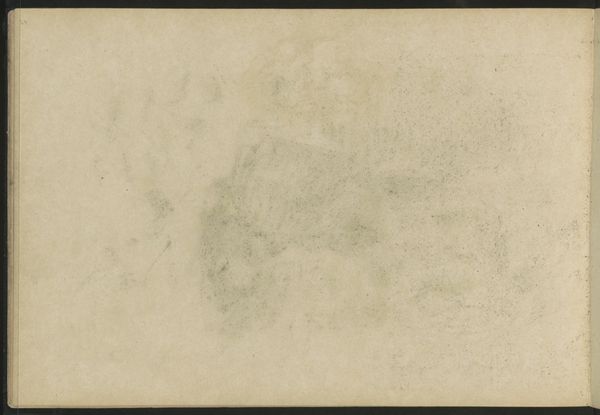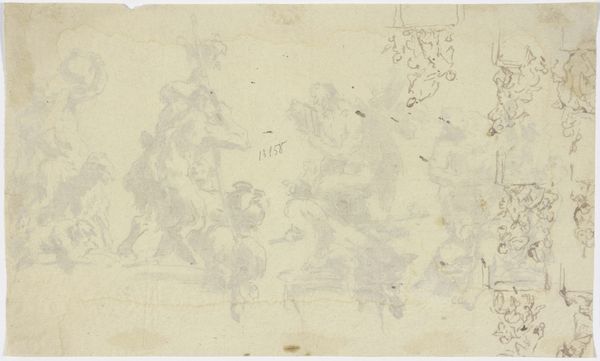
drawing, paper, pencil
#
drawing
#
impressionism
#
landscape
#
paper
#
pencil
#
watercolor
Dimensions: 215 mm (height) x 130 mm (width) (bladmaal)
Curator: As we stand before P.C. Skovgaard's "Trækrone" from 1872, created with pencil on paper, I am immediately struck by its ethereal quality. It feels like a whisper of a memory rather than a concrete depiction. What do you see? Editor: Like gazing into the soul of an old tree, somehow! It's fragile, like a faded photograph, but I feel this deep, calm quiet. The sketchiness almost adds to its charm. But hey, it is what I look for in a nature retreat. Curator: Skovgaard was a central figure in the Danish Golden Age, and his landscapes were often intertwined with national identity. The choice of the tree crown, or treetop, is fascinating. The treetop could be a metonym for the nation itself, aiming towards progress and greater visibility from this new perspective. Editor: Visibility indeed! Like it's stretching towards some unknown, bigger thing. Trees, nature…aren't they often symbols of resilience? And look how delicately those pencil strokes define the leaves and branches. Nature is fragile. We, humanity, could lose the deep forests. Curator: Precisely. Trees often served as symbols of steadfastness but the social and political context in Denmark at this time was anything but certain. Examining this piece with postcolonial awareness, we might reflect on how representations of nature also play into narratives of ownership, belonging, and cultural power. The sublime depicted by landscape art becomes closely entangled with questions of land ownership and heritage, the very bedrock of culture that also oppresses many identities, not only people but animals as well. Editor: Deep, man. Super deep. I kinda see it. For me, I’m sticking with my feeling of serene fragility. Maybe it’s the simple tools, pencil and paper. Maybe that little imperfection— a subtle crease – just shows how the passage of time leaves its trace. It tells a story too. It makes it even more human, even if nature. It does not seem like perfection exists as a way to tell us about humanity, to bring people back into nature. Curator: That sensitivity to the materiality is exactly the entry point for these reflections. By slowing down, paying attention to the traces, we activate conversations about value. I guess that the beauty is in the imperfection as much as it is in the intention. Editor: Ah, what a tree it is, if you really think about it, right? It gives the possibility to talk, not about the tree, but ourselves.
Comments
No comments
Be the first to comment and join the conversation on the ultimate creative platform.

